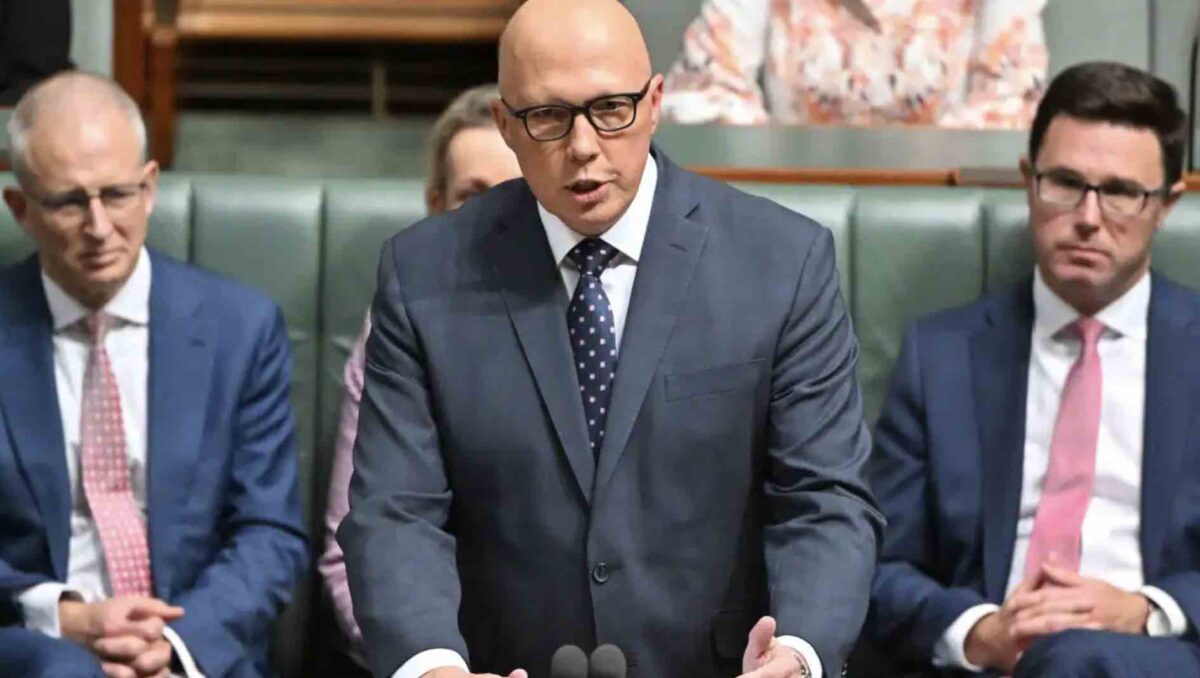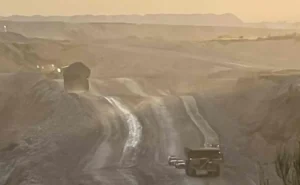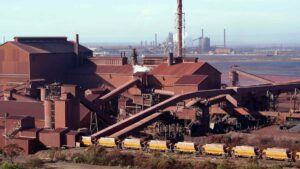The energy tropes on social media are getting so bizarre it is sometimes hard to imagine how anyone would take them seriously.
Welcome to the Trumpian world we now live in: Say something often enough and people may end up believing it. And just when you think it could not get any more weird, up pops the federal Coalition with a plan for nuclear power.
There is a lot to be said about nuclear energy, and despite its exorbitant costs some countries are still trying to build nuclear plants because it either supports their military complex, or because they feel they have no choice.
In most countries, the arguments in favour of nuclear power are usually based around the promise and determination that it can accelerate the transition towards net zero and low carbon economies.
Not in Australia: The Coalition makes their position very, very clear. They don’t buy into the renewables thing, they think it is reckless and will ruin the environment, and the economy. And they are not particularly interested in accelerating, or even meeting, net zero emission targets.
Far better, they say, to stop the renewables transition in its tracks, keep coal fired power stations open and wait for small modular reactors. Which, if they ever arrive, cannot realistically be deployed in Australia before 2040, if then.
Even the large nuclear reactors suggested on Tuesday by Coalition leader Peter Dutton – maybe he realises that SMRs are indeed a fantasy – could not be built before 2040, more likely 2045.
The push for nuclear over renewables, and keeping coal fired power stations open, is an argument you can only prosecute if you happen to believe that climate science is a load of crap, and the result of some UN-based conspiracy to deprive us all of our liberties.
Which just happens to be a core belief of key members of the Coalition, its loudest media mouthpieces, and what appears to be its main advisory body, the Gina Rinehart-funded Institute of Public Affairs.
As Michael Mazengarb reported last week, a whole cast of right-wing so-called “think tanks” are prosecuting the argument for nuclear, attacking renewables, and helping feed the social media frenzy against this and other technology solutions – battery storage, EVs, and the very concept of demand management and smart energy.
The nuclear debate is moving into the mainstream. Surveys, most with loaded questions, suggest there is majority support for nuclear and the removal of Australia’s ban of the technology. That’s questionable, but even Australia’s pre-eminent business commentator, Alan Kohler, bought into the argument this week.
Kohler argued the ban against nuclear should be removed, but won’t matter much because the market will decide, and investors will not put money into nuclear because they don’t want to bury themselves under a wall of debt and absurdly expensive production costs.
“The market will decide” is a key Coalition and nuclear booster talking point.
Kohler is wrong. And so is the Coalition. The market will not decide. The market has not decided the fate of nuclear power stations for decades – they are funded, owned and often enough bailed out by governments and state-owned entities.
And there are not that many actually being built. The Coalition’s “nuclear renaissance” is a mirage and a fiction. According to a report from the International Energy Agency this week, new solar installations across the world rose to 420 gigawatts in 2023, new wind to 117 GW, and new nuclear slumped to just 5.5 GW.

And they are not doing much for emissions either. In the five year period from 2019 to 2023, the IEA says, solar accounted for 1.1 billion tonnes of avoided annual emissions. Wind accounted for 830 million tonnes of avoided annual emissions, and already installed nuclear just 160 million tonnes.
That won’t phase a Coalition government in Australia. The nuclear ban should stay because the country’s ruling parties, and the Coalition in particular, have shown a penchant for hare-brained and vanity projects that make little or no financial or strategic sense.
Think of the Aukus deal – $368 billion for six nuclear submarines, which, as was feared, as acted as a kind of Trojan horse for the nuclear boosters. Think of Snowy 2.0, already costing $12 billion and counting for a project that won’t deliver anything like the benefits claimed, and that does not include the cost of transmission.
Snowy 2.0 is an interesting case. It could be argued that Snowy 2.0 has done more damage to the Australian renewable energy transition than any other project, or policy position.
It’s a radical thought, but the sheer scale of Snowy 2.0 has caused countless of smaller, more sensible and more distributed storage projects to be delayed or cancelled.
The Snowy Hydro rhetoric in support of the project – that battery storage is not feasible, and household batteries are a waste of money – has helped deflect the media and policy debate away from where it needed to be: consumer energy resources.
Snowy Hydro didn’t want their primacy in the market challenged by new fangled ideas. Even demand management, its former CEO Paul Broad liked to say, is akin to “forced blackouts.”
Their push against CER and smart energy solutions has caused pain across the grid and for consumers, and helped derail plans for a sensible and fair transition. Regulators and policy makers only now realise they have been led up the garden path and are scrambling for ways to repair the situation.
And you can also argue that the transmission lines that have been fast-tracked to support Snowy 2.0 – the HumeLink and VNI-West, most notably – have been rushed and poorly handled, and have provided a trigger point for the anti-transmission and anti-renewable agenda that now floods the airwaves.
Sadly, Snowy Hydro is still at it. During a recent media tour of the stalled and costly Snowy 2.0 tunnelling project, CEO Dennis Barnes was quoted by one of the invited journalists as saying that “no other technology” exists that can deliver more than four hours storage.
“There may be technologies in 15, 20 years, but there is no commercial technology other than pumped hydro that goes beyond four hours,” Barnes was quoted as saying by The Australian.
That would be news to global energy giants such as RWE, BP and Ark Energy (owned by Korea Zinc) who have contracted to build eight-hour batteries for the NSW government as part of their plan to fill the gap that could be created if the Eraring coal generator does close as planned in August next year.
Those eight-hour batteries will all be up and running well before Snowy 2.0.
The energy world, particularly in Australia, is moving away from “baseload” to renewables and “flexible” dispatchable capacity.
And it’s moving away from a complete dependence centralised generation to more distributed and consumer based resources. Rooftop solar is expected to increase four fold over the next two decades, and be accompanied by a mass switch to electrification (business and households), and electric vehicles.
The switch to EVs is significant, because it causes consumers to think on a near daily basis how and where they will charge the electric vehicles, and at what cost.
It makes them focus on their options for solar, and storage, and smart software, and whether they are getting a fair deal from the current market that is now so focused on big centralised power.
The Coalition wants to throw that transition into reverse.
Exactly how the Coalition expects to jam baseload nuclear into a grid where rooftop solar accounts for all grid demand and more during the day is not explained. Don’t expect an answer, because they haven’t thought about it yet, and when they do it will probably feature curtailment and more storage.
See Alan Pear’s comment: How can nuclear fit into a renewable grid where base load cannot compete
And don’t think for a moment that the Coalition, if in power and with no nuclear ban standing in its way, would not propose some mad-cap scheme to lock in some unproven projects from the first nuclear salesman that turns up at their door.
Private investors won’t put up the money for nuclear power plants, but the Coalition – be it the LNP in Queensland with their state-owned utilities, or the Dutton-led Coalition in Canberra with Snowy Hydro – won’t need them.
Perversely, Snowy Hydro, might provide an attractive synergy for the Coalition’s nuclear plans, and not just for their shared disregard and disdain for consumer and distributed energy resources and smart energy solutions.
EdF, the French government-owned utility that runs its nuclear power plants, is also the biggest operator of pumped hydro in the world, because much of the world’s pumped hydro was built half a century ago with the specific task of backing up nuclear energy. As the name suggests, Snowy Hydro, has lots of hydro.
(Yes, nuclear needs back up power, and a lot of it. Because of that, and because its business model is based around “baseload”, it doesn’t really help in the renewables transition. In a country like Australia with world-leading wind and solar resources, it competes against it).
And, like the French government which shields French consumers from the soaring cost of nuclear (it cost $40 billion in 2022/23 alone after half their fleet went offline), the Coalition can dip into the Commonwealth budget for funds – as they did for Aukus – for which the current crop of MPs and Senators will never be accountable.
The only small modular reactor that has got close to regulatory approval and to actually being built, was the NuScale technology in the US, which got pulled because the costs spiralled beyond what even the technology’s naysayers were predicting.
But we are told repeatedly that nuclear isn’t expensive at all. “Billionaires are demanding Australians refuse cheaper, reliable, emission-free nuclear power,” Vikki Campion, the wife of National MP and anti-renewable ring-leader Barnaby Joyce, writes in the Murdoch media. Cheaper than what, exactly? Nothing much.
The Coalition has been trying to stop the renewable energy revolution for the last two decades, and is now launching attacks against institutions such as the CSIRO and AEMO.
Maybe it’s time people paused to reflect about why that is. Exactly whose purpose are they serving, whose interests are they defending? Why was it so important for Dutton to fly to Perth last week for an hour to celebrate Rinerhart’s birthday?
The fossil fuel mafia ganged up on John Howard over the then mandatory renewable target and the proposed carbon price, and right through Tony Abbott and Scott Morrison to Dutton, it’s been the same story. Malcolm Turnbull might have been different, but his legacy is Snowy 2.0.
Labor is now in power, its climate policies still fall short of what the science demands by 2030, but it is having a real crack at meeting the 82 per cent target modelled in the market operator’s Integrated System Plan, and which is now an official target.
Even the biggest energy users – those that run the smelters and the refineries – are demanding the transition to renewables, and are acting on it.
Curiously, the renewables industry stays largely mum on the nuclear issue – relying, perhaps, on the notion that rational thought, science and economics will prevail. We don’t live in that world any more.
Nuclear is nothing more than a distraction, and a dangerous one at that. The ban should stay.










